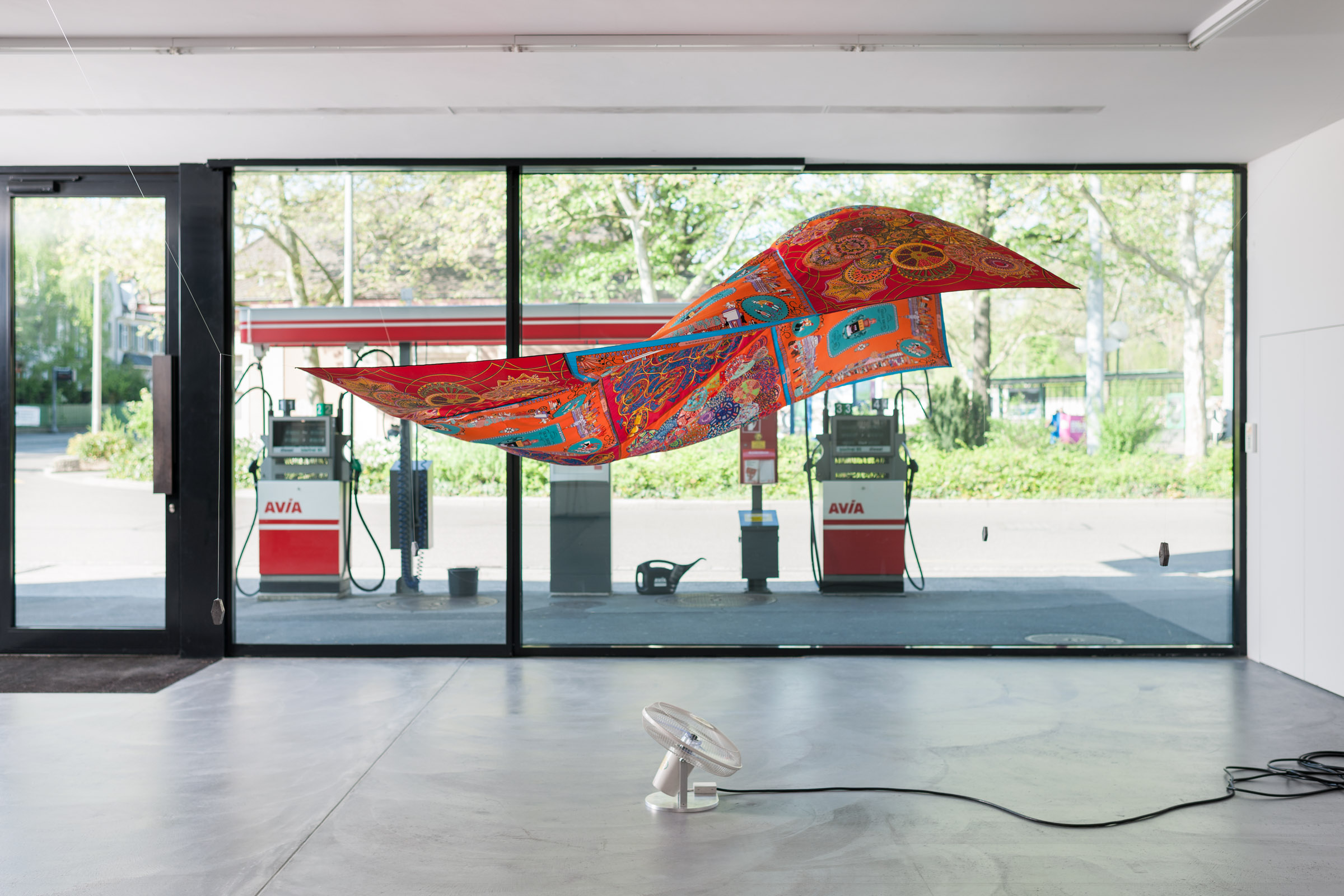Superflex
Euphoria Now

APRIL 25, 2015 – JULY 11, 2015
von Bartha, Basel
Text about the Exhibition by Barbara Steiner
Brion Gysin and Ian Sommerville’s dream machine (1958/95) forms the conceptual starting point of the SUPERFLEX exhibition. Initially the camera consisted of a cardboard cylinder that was mounted on a record player, emitting flickering light throughits slots while revolving around a light source. With one’s eyes closed it is possible to detect changing colour patterns, and given the proper intensity and duration this can cause a state of hypnagogic hallucination. In 1961 the dream machine was patented as a “procedure and apparatus for the production of artistic sensations”. Since then it has been used in a variety of ways in literature, music and pop culture, for example by William S.Burroughs, Jonas Mekas and Andy Warhol. In 1979 the Bartha gallery presented the dream machine for the first time; now SUPERFLEX is taking over, transferring the procedure and the apparatus that were once used primarily for the creation of artistic sentiment into the social context of the present.
Shaped in the form of iconic bank buildings such as the Bank of America in Los Angeles or the Deutsche Bank in Frankfurt, the vessels of Euphoria Now/ Citygroup (New York) & Echinopsis peruviana (Mescaline) (2015) are plantedwith cannabis, poppy and mescaline, short-circuiting the intoxication of the stock market with the consumption of psychoactive substances. Hallucinatory visions and dream-like images are conflated with the loss of reality and the unrestrained players of the banking industry. Arranged into groups these planters generate a concentration of different symbols of power, thus bearing witness to the “greatest hallucinations” (SUPERFLEX) of today.
The fleeting nature of material symbols of power is at the heart of Modern Times for Ever (Stora Enso Building, Helsinki) (2011); in fact, the act of watching this film already amounts to a hallucinatory experience. Over the course of 240 hours of film, the controversial modernist company building designed by Alvar Aalto is literally crumbling to dust. Spanning several thousand years, this cinematic fictionspeculatively anticipates the collapse of the building. In the context of its presentation in Basel the work – initially set in public space within sight of the Stora Enso Building – becomes a metaphor of the growing instability and the disintegration of seemingly firmly established structures. With their so-called Corruption Contract (since 2009) SUPERFLEX weighs in on debates over corruption and corruptibility, addressing dependability and security – firmly rooted in democratic structures, entities and in binding legal systems – as well as their dissolution. At the moment of signing the contract, the signatories bind themselves either to perform corrupt actions themselves or to incite others to commit such acts. The definition of corruption used here complies with the United Nations Convention Against Corruption. Corruption Contract forms part of a series of contracts which SUPERFLEX concludes with their partners – art institutions or other organizations – and through which they regulate their conduct. With multiannual projects such as Guaraná Power (since 2003) and Supercopy(since 2002), the artists raise questions about power, control and the promotion of interests by companies (and the art scene) while toying with possibilities of appropriation and self-organization, or rather alternative economical models. Time and again the works by SUPERFLEX have been the object of legal dispute and requests for injunction filed by large firms. In light of these experiences and in an attempt to handle the court orders, SUPERFLEX has begun to explore the productive potential of prohibitions and to provoke reactions.
With Supercopy/ Hermès & Haacke(2015) SUPERFLEX adapts and modifies Hans Haacke’s Blue Sail (1964–1965) in which a fan is blowing air under a taut blue sail that is bobbing on the waves. Attached to the ceiling with four cords and weighed down at the suspension points with lure weights, the sail is held in place despite its flowing movement. By exchanging the blue sail with fake Hermès scarves, SUPERFLEX contributes to the debate on “product piracy” on two levels, addressing counterfeit products as well as the appropriation of Haacke’s work. The group thereby alters the conceptual focus of Blue Sail, which reveals reciprocal dependencies in an abstract way, aligning it towards a concrete concern with copyright law and appropriation strategies. A psychedelically visionary, ecstaticand happy state of mind affects sesory perception. Occasionally such a state of mind can also be reached through autosuggestion, based on the belief in particular effects. Although Non Alcoholic Vodka (since 2006) tastes like vodka, it does not contain any alcohol. Disappointment follows instantaneously, at the latest when the desired effect fails to set in. The title of the exhibition, Euphoria Now!, leaves a similarly disenchanting impression, calling for exuberant sentiments practically by command. Once geared to an expansion of consciousness, the hallucinatory experiments and social optimism of the 1960s and 1970s have after all shifted to the clouding of consciousness and prescribed euphoria.
Error. No content found for Slider